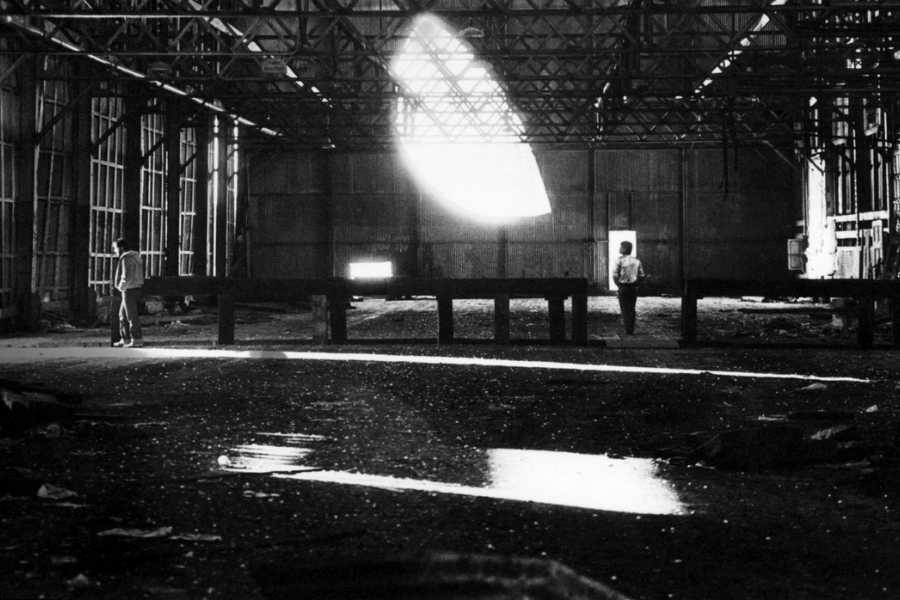The Architecture of Behaviour

C James Fagan considers the impact that artist and architect Gordon Matta-Clark has had on our impressions of the built environment…
Not to sound creepy but… have you ever watched people? Especially people in cities or towns, they appear fairly autonomous going around their business, following their own paths. Or so it would appear; after observing people for a while you being to realise that their directions are being subtlety controlled by the environment in which they inhabit.
These built paths aren’t the only ones that people travel along; some are defined by society, some by culture. This is architecture of behaviour, and is probably expressed best through our interaction with the built environment. After all, the majority of our lives takes place in, or somewhere near, some kind of building. Architecture takes up a liminal space in our lives; we occupy it, it occupies us, and it reflects our social mores and attitudes towards the public and private.
It would be easy to consider this relationship as a rigid one. It isn’t — walls can be knocked down, uses of buildings can change, and buildings can be abandoned. What I’m saying is that architecture, like the society that produced it, is mutable. The rules are always adapting, opinions and needs change.
The post war years saw the biggest social shift in western culture; from the late fifties to the late seventies the status quo was under constant question. The rules that govern everything — from sex, art, literature and architecture — were being modified and redefined.
In particular, the art world during this period saw the ‘dematerialisation’ of the art object, where production and practice saw artists move away from the traditional modes of painting and sculpture. Art could be a movement, an ad in a magazine, the thought in the mind of a viewer; this is the context in which Gordon Matta-Clark worked.
From this viewpoint it seems impossible to place Matta-Clark in another period; he was the right man at the right time. In an era where everything appeared to be in flux, he crossed the boundaries of art and architecture (not unlike the similarly minded group Archigram). Though trained as an architect, Matta-Clark worked within an artistic context, reinterpreting derelict space to explore notions of meaning and entropy.
As part of what could be considered an artistic perfect storm, Matta-Clark was based in New York, which at the time (the early seventies) was suffering from the negative effects of major economic events leading to a large amount of abandoned buildings. It was within these empty homes and workplaces that Matta-Clark developed a method of ‘cutting’; this simply meant that he would break into these foregone houses and cut out a part of the building, leaving a void behind.
Initially these removed pieces were displayed in galleries like sculptures. However, it became apparent to Matta-Clark that the focus of the work should be the voids left behind, and how they transformed the space. It was also necessary for people to experience the work, to inhabit these places that were once inhabited; to physically and mentally occupy theses zones, and to become performer; the audience’s actions formed by the actions of Matta-Clark.
This process can be seen to have its ultimate expression in the piece Day’s End (1975). Day’s End layered transgression on transgression; in order to create this piece Matta-Clark trespassed into a derelict Manhattan pier, reforming this perfunctory place into what he called ‘a sun and water temple’.
The giant crescent cut into the front of the pier shouts out a kind-of defiance; Matta-Clark is giving this building a glorious death, celebrating its built-in obsolescence, embracing its entropy. This was the essence of Matta-Clark’s ambition, not only to recondition these architectural voids, but also to recondition modes of behaviour. This change of environment altered people’s attitudes, who began to treat it as a place of transcendence rather than the used shell of commerce.
This may have had unforeseen results. The work of Matta-Clark and his peers led to a chain reaction which brought in an interest from developers who, attracted by this artisitic activity, began to change and eventually destroy the spaces which initially brought them there. This happens in many cities — it’s happening in Liverpool now — and it’s part of the mutability of the built environment I spoke about at the beginning of this article. The architecture of behaviour changes; in life and art transgression becomes the norm; the one-man operation becomes the institution.
The paths we travel alter as we go and the destination is always changing.
C James Fagan
Alvin Baltrop and Gordon Matta-Clark: The Piers From Here — at Open Eye gallery until Sunday 9 February 2014, free entry





